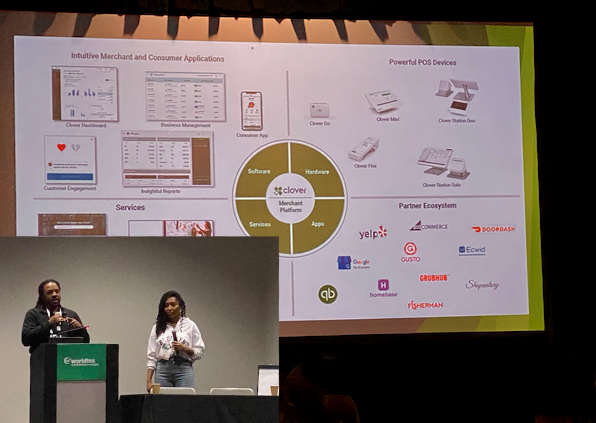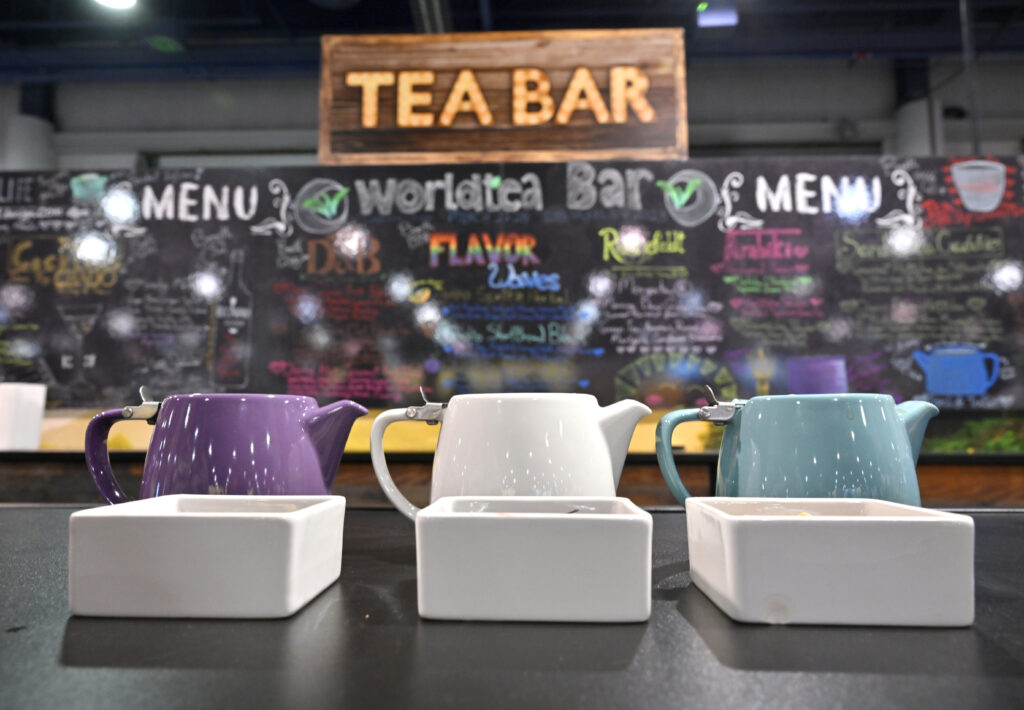
Running a teahouse involves support systems that weren’t there even 10 years ago. Today, systems are better integrated to talk to each other or export reports to use in spreadsheets for analysis. Inventory in the point of sale (POS) system integrating with your online website is super helpful. There were several presentations at the World Tea Conference + Expo recently in Las Vegas, Nevada that brings these aspects together to make for efficient tools in this post-pandemic tea world.

How’s your organizational and financial skills? How about marketing and social media? All of it can seem daunting those first several years, but there are tools and folks who have already walked the multitude of paths in all these areas. For example, some tea business owners are driving growth in the tea industry through intent-based advertising and experiential retail.
Several Expo presentations covered the topic in detail.
“Operating Your Teashop with the Help of Technology”, a presentation given by Alfonso Wright and Jamila Wright of Brooklyn Tea covered many areas for efficiency – human resources management including payroll and scheduling, POS for sales reports and efficiency markers, website sales, inventory integration, delivery app authentication, and staff communication.
Automated inventory systems, some of which are free, some with monthly service fees (with better deals on an annual package) are helpful. We’ll explore the possibilities of full-scale operations, and the alternative piecemeal approach of exporting sales data to spreadsheets and analyzing the details yourself.
Across the board, you can spend hundreds of dollars per month on a system like Homebase that helps with payroll, scheduling and staff communication, with labor cost controls. Systems talk amongst themselves with inventories connecting, in the case for Brooklyn Tea Clover for the POS and Shopify for the website sales, which all provides you peace of mind, and performs details that you no longer need to do manually. The cream of the crop, we’d say, for a growing, profitable business. There’s the monthly fee on these systems, but there’s also the cost of the hardware (ipad, register, cash drawer, card readers) and depending on your budget, going with the full-scale operation out of the starting gates might be more than you need.

The Do-It-Yourself, cheaper alternative for those starting out (and for us even at year 10 during the pandemic) was Square as a POS and as our online webstore, with a percentage per transaction fee, no monthly fee, and we had a ticketing system that worked well enough as long as the Post-it Notes stuck to the tea brewer’s counter. There are systems now that print tickets in the kitchen for orders, making this somewhat easier. We had a spreadsheet that was loosely modified weekly on sales of specific tea inventories that we’d enter manually, and we had staff performing biweekly tea inventories by counting kilos and packets of each of our 100+ teas during slower times on the floor. A lot more involved for sure, but a monthly or bimonthly inventory still is something that needs to happen to help with future ordering of tea and supplies. With Shopventory, inventories are coordinated between your POS and website tool with less need for regular inventory by staff.
Staff communications and scheduling come together in Homebase as it integrates sales data, staffing, payroll, and data from credit cards on whether they are repeat customers and where they are coming from based on their credit card’s zip code. Homebase takes the emotions out of labor tracking and whether someone is clocking in on time or not, and can lead to reports where merit based incentives are determined by those reports. Using Clover for staff to clock in and Homebase to connect with payroll data you’ll get a nice projection of what payroll will be and scheduling suggestions.
We used a simpler, cheaper method with MyTimeStation for staff to clock in with biweekly exportable report on staff hours, exporting to a Google spreadsheet set up with predetermined automatic calculations. The MyTimeStation and Google Spreadsheet makes this a fairly simple process, and MyTimeStation is available as an ipad as well as iphone app that staff running errands can clock-in on remotely, and it’s free for 10 staff or less. Using GroupME for group texting for call-outs and shift swaps, we had a communication tool for immediate action requests.
On-boarding, which Homebase provides as part of their system at their highest monthly rate, includes employment forms and introductory processes and videos. Alfonso mentioned setting up Google Forms for onboarding processes, with integrated videos – a great solution that just takes time to produce, but so easy to update and share with staff through Google Drive.
Once you have those figures from your POS – what’s popular and selling, what has the highest or lowest profit margin – then you can turn to what to market to your customers. “Intent-Based Marketing” a presentation by Mackenzie Bailey of Steeped Content takes the information from our POS reports as top sellers – what customers are buying – and takes the effort behind the daily sales into what our marketing decisions on social media and web advertising should look like, with the data on zip codes from credit card payments showing where customers live allows you to focus your marketing in these areas on Google, Facebook, or your local weekly newspaper. A blog post focused on SEO search results for your site, and the product customers are buying through your POS, creates repeat interest and follow-up purchases.
Free or per-transaction system like Square, Google Workspace and Calendar, and MyTimeStation, are a good place to start, then move to the fee-based systems as budgets allow like Shopify, Clover, Homebase and Shopventory is a sure way grow a business smart and within budget when starting out, or even a few years in.
Ellen Kanner owned and operated a traditional true-to-origin teahouse in Portland, Maine with her husband for 12 years before moving the operation online while continuing to offer their longtime customers loose leaf tea and teaware, their Tea Tasting in a Box®, and tea tasting events and trips, while setting up tea programs at restaurants and cafés. She has traveled to origin for tea to South Korea, Japan, India, Taiwan, Nepal, and Sri Lanka, as well as to Portugal. You can see more at www.dobrateame.com.

